History
Young & Iconic. RUNNING ON WAVES. The Story of Creation.
Every sailing ship has her legend, her tale. At least these days – the days of mass production of everything, up to spacecraft – sailing ships are being built individually and remain as unique as at the dawn of sailing era. There are purely utilitarian reasons for the uniqueness of modern sailing ships: a modern sailing ship must have all the systems your ordinary liner has, accompanied by a strong hull of special form, masts, sails, gear, sails handling systems and the team experienced in sails handling… In one word – it all increases the cost of a ship (and cruising aboard such a ship) and decreases the number of those willing to buy a ticket. It appears then, that a sailing journey is not for all. It is only for those who are truly in love with the sea. In love of the wind blowing in the gear, in love with the cloud of white sails above and with incomparable feeling of the wind energy, transmitted by the tensioned vangs to the hull, which then transforms this energy into the forward movement of the ship. One has to be able to feel this. In XXI century it is not by any means mass culture like going to cinemas or staying at hotels. It is the style of the selected, like an opera or a classical concert – it is available but only few attend.
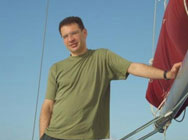 However, let us go back to the legend. RUNNING ON WAVES was not initially conceived as a business project. Ruben Khokhryakov, PhD in economics, its author was well too aware of the economics of the project.
However, let us go back to the legend. RUNNING ON WAVES was not initially conceived as a business project. Ruben Khokhryakov, PhD in economics, its author was well too aware of the economics of the project.
He had a different goal in mind – to build a VERY BEAUTIFUL modern sailing ship in classic proportions on the one hand and very sailable on the other. To continue what the sailing masters built in the time of tea clippers but with the XXI century technology at hand. The economic aim was self-sufficiency.
At that stage, there were just two in the team – Ruben himself and Liliya Bilyak, his assistant. The thing was that neither Ruben Khokhryakov nor Liliya Bilyak had had nothing to do with shipbuilding before (childish travel in Optimist class does not count). Ruben had dedicated his life to professional sound equipment for theatres, stadiums, discos, etc…. Liliya had had her own HR company. This is the most amazing in this project – two laymen managed to get into the core of the matter, to involve the right partners and to see the project through. Media often say that that was a childhood dream come true, but it is not the case. Ruben and Liliya themselves find it difficult to say, what it was that had urged them to realize this complicated project. Apparently the Universe needs it for one reason or another….

They began with putting together a tentative technical design specification. A general idea so to speak. An open tender for a provisional design was initiated. There came offers from the designers – some of them were interesting, others just fun. Here, take a look at one of the ideas – his main theme was: “Can you just imagine, how my lovely ship will be reflected in the water at night?!” Who would argue that?
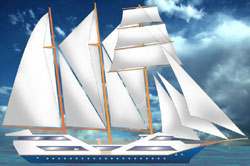
The days went by as the designs kept coming in. We must say that there were quite a few participants. As usual, it all seemed not quite right, not quite what was required. And then… it all happened like in a fairy tale. On one fine morning a dream ship drawings came in. The drawings that, as it appeared later, were made in the course of one night.
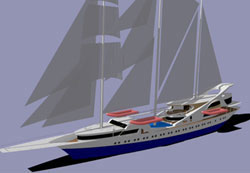
That marvelous ship was so much more interesting than other ones that it became obvious – we would work with that particular designer. The talented person was Nadia Stepchenko, an industrial designer from Nizhniy Novgorod. If one had to take a careful look at the ship built, one would see a lot in common with the fabulous ship design drawn in one night.
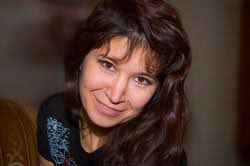
Now it was the time they made the fairy tale come true. And to do this a real project and a real technical design specification were required. Ruben and Liliya went to
Zigmund Choren, a famous sailing designer from Gdansk.
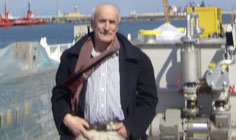
According to “Choren Design and Consulting” specifications, the ship had to be a little bigger than a tea clipper, 60 to 70 metres, had to have two deck houses, two generators, one main engine, an adjustable pitch screw that could turn vanes in weathercock position, as well as barquentine rigging. Why that of barquentine? The thing is that a sailing ship looks real when it has square sails, from a distance fore-and-aft sails make even a large ship look like a yacht. This is why there was no doubt about having square sails. On the other hand, RUNNING ON WAVES was conceived as a ship whose main driving force would be the sails. As a ship that would sail in the Mediterranean islands, which from the navigation point of view is coasting, i.e. the ship would often change course. In order to frequently change heading a ship would require square sails on the fore mast and fore-and-aft on others, just like those of a barquentine. For example in order to cross an ocean, where the heading is not changed, a ship must have the rigging of a frigate – square sails on all masts. Hence, RUNNING ON WAVES is a barkantaine. “Choren Design and Consulting” came up with this blue print of the ship with all the calculations necessary.

Here it was Nadia Stepchenko’s talent that had to shine! She had to use the “Choren Design and Consulting” dummy and make a masterpiece of it, sticking to the basic geometry of the pre-calculated project she had to make a swan out of an ugly duckling.
It did not happen in an instant, the work continued for several months. But Nadia made it! The last touch was the deflection line – it had to be corrected three times with the help of famous marine painters as consultants. It came out just as wanted – the hull of a classical tea-clipper that put together the best from the masterpieces of that time and the form alignment in classical proportions, without going into high tech.
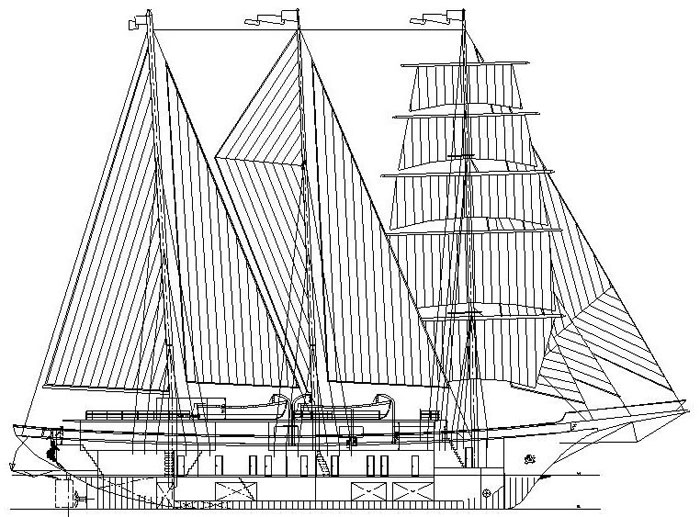
Finally, they began to build. ODYS from Gdansk was chosen as the hull constructor.


They built the aluminium houses and masts at Yantar ship-yard in Kaliningrad, a former submarine yard. Possibly, RUNNING ON WAVES is the last sailing ship whose masts the real sailing masters welded by hand.

A huge floating derrick floated the ready hull, and the girder then went under tow for further building to PORT POLNOCNY near Gdansk.
That was the time when the ship quite unexpectedly found her name. We have to say that in the construction documents the ship had a name of the Holy Grail and would have remain that way if not for one thing. The tradition has it that at the first floating off somebody must break a bottle of Champaign against the ship’s stem post and wish a good fortune to the new ship. This somebody has to be a young girl with innocent soul. The choice fell on the constructor’s daughter, 11-year old Veronika Choren. She broke the Champaign against the stem post and gave a spontaneous speech as follows: “Sail the seas and the oceans to celebrate Polish, German and Ukrainian ship builders who built you! I christen you RUNNING ON WAVES. The owners considered that the mouth of the child spoke truth and the ship received the name.
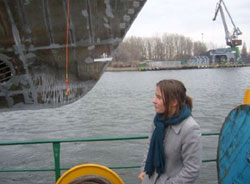 By the way, the ship has many a unique feature. US PATENT CHAMBER accepted the project as an invention according to the total of its unique characteristics discovered during a patent search. Shallow draft is one of these characteristics. Thanks to the use of lead as the ballast, shallow draft allows the ship to enter shallow bays. Lead weighs a lot but is compact which makes the ship’s draft 2 meters (!) less than it could have been with the standard ballast of cast iron or concrete. When at the sea the crew noticed that RUNNING ON WAVES does not cut high waves like an iron, instead it slides along the ridges as if running on waves in total agreement with her name. Whether it is a miraculous coincidence with the name or a chance – chance being unacknowledged pattern – you have to decide for yourself.
By the way, the ship has many a unique feature. US PATENT CHAMBER accepted the project as an invention according to the total of its unique characteristics discovered during a patent search. Shallow draft is one of these characteristics. Thanks to the use of lead as the ballast, shallow draft allows the ship to enter shallow bays. Lead weighs a lot but is compact which makes the ship’s draft 2 meters (!) less than it could have been with the standard ballast of cast iron or concrete. When at the sea the crew noticed that RUNNING ON WAVES does not cut high waves like an iron, instead it slides along the ridges as if running on waves in total agreement with her name. Whether it is a miraculous coincidence with the name or a chance – chance being unacknowledged pattern – you have to decide for yourself.
There will be a lot further down the line. Systems and engines assembly, huge scope of work on the interiors, tests. The whole construction process took over 5 years. Segel Masten Yachten from Bremen under the leadership of Michael Chatsewitch played the main role in coordination of the process. This is why we mention this company as the ship’s constructor, although the customer himself was the integrator of all the works.
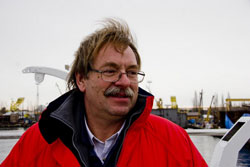
The interior design was a complicated compromise. On the one hand, SOLAS convention requirements severely restrict the usage of classic materials like wood in the first place. On the other hand, we wanted the interior to be in style of a true sailing ship, far from the high tech of modern materials without the soul. Finally, the interior became made of teak, leather and other natural materials. However, the layer of teak over aluminium and steel is very thin. Our guests actually don’t see it, they see just the teak. By the way, three designers from three countries created the ship’s interior. Joahim Kinder from Germany made corridors’ interior; Valentin Zhukov of the Strganov Academy of Arts was responsible for the cabins and the restaurant; Harris Poulis from Athens (Greece) made the design of public areas and bathrooms. This is probably why the interior is somewhat eclectic, but this does not make it bad for sure!

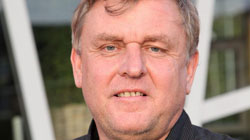

At last, the inauguration day came on.... There was a lot of guests and media, a brass band, hundreds of balloons flying in the sky, ship tours, cocktails and banquet, you name it.
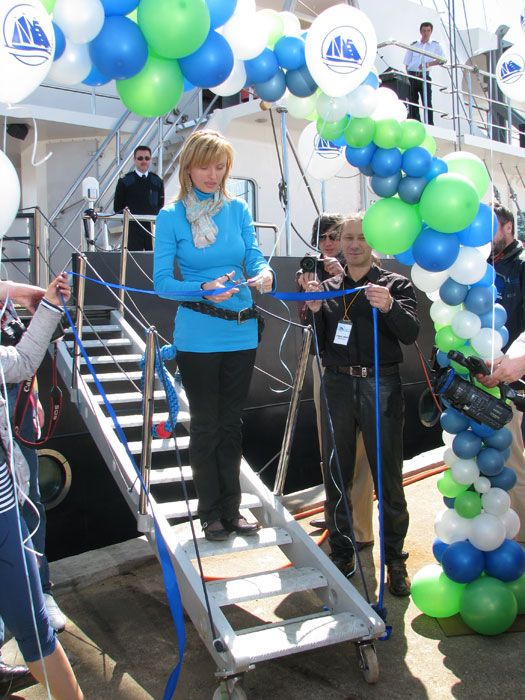
Alas! After the inauguration the Registrar did not accept the vessel. The hydraulics contractor did a bad job. We had to do it again. Actually, this project displayed as if on the film (do you still remember photo films?) both the best and the worst human qualities of a mass of people. Some contractors got to work on this unusual and beautiful project with great enthusiasm. Others on the contrary either out of envy or out of innate spite tried to make hay of it. Happy to say that the latter are outnumbered. It is like in life, isn’t it?
Finally, the hydraulics were made anew. The Registrar accepted the vessel in July 2011. RUNNING ON WAVES went to its first job – two-day cruises from Bremerhaven to Helgoland. It was a risky undertaking. Anyone who is familiar with the sailing world knows that Bremerhaven is the world capital of the big sails. Left and right there is either a real sailing boat or a model in a shop window. Moreover, from the cradle every man and woman in town is an expert in sailing vessels. RUNNING ON WAVES went through the test with the best marks!
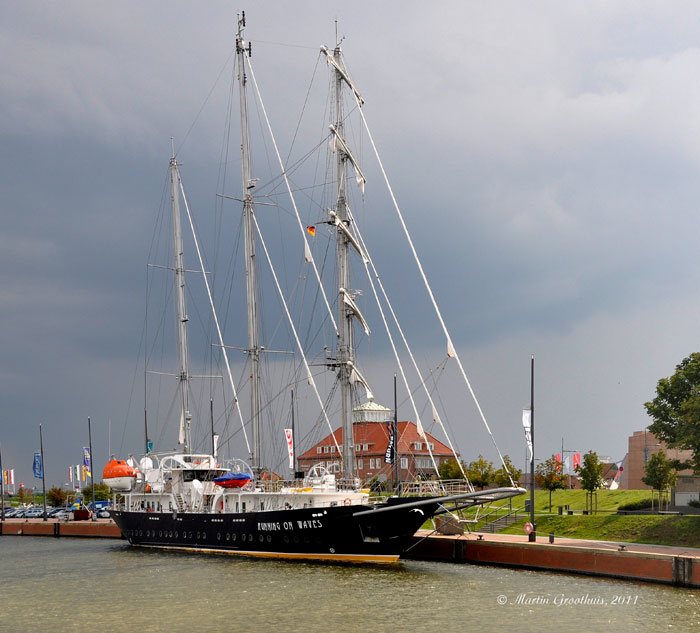
There were many events afterwards: a scientific expedition “To the Sources of Europe” that involved underwater works to study the megaliths, joint training with the Cyprus coastal guards, erection of an underwater Cross in Cyprus (laid down upon all charts), visit to Holy Mount Athos in Greece with astronauts onboard with a special mission in 2013, support vessel during sailing races (classic sailing ships POROS 2012, Tall Ship Race Black Sea in 2014, Malta Middle Sea Rolex Race in 2015), participation in several pilgrimages, many scientific seminars onboard… and charters and cruises with many interesting guests and even royal families. No details, however, since we guard privacy of our clients.
2018 will see an interesting conference on ecology aboard the ship with high clergy and city mayors.
In 2019 RUNNING ON WAVES will take part in Tall Ship Black Sea Race.
There will be a circumnavigation and many other exciting adventures. Our RUNNING ON WAVES is still very young, but already an icon!






























